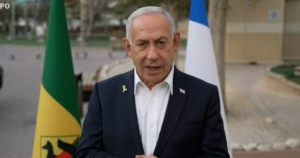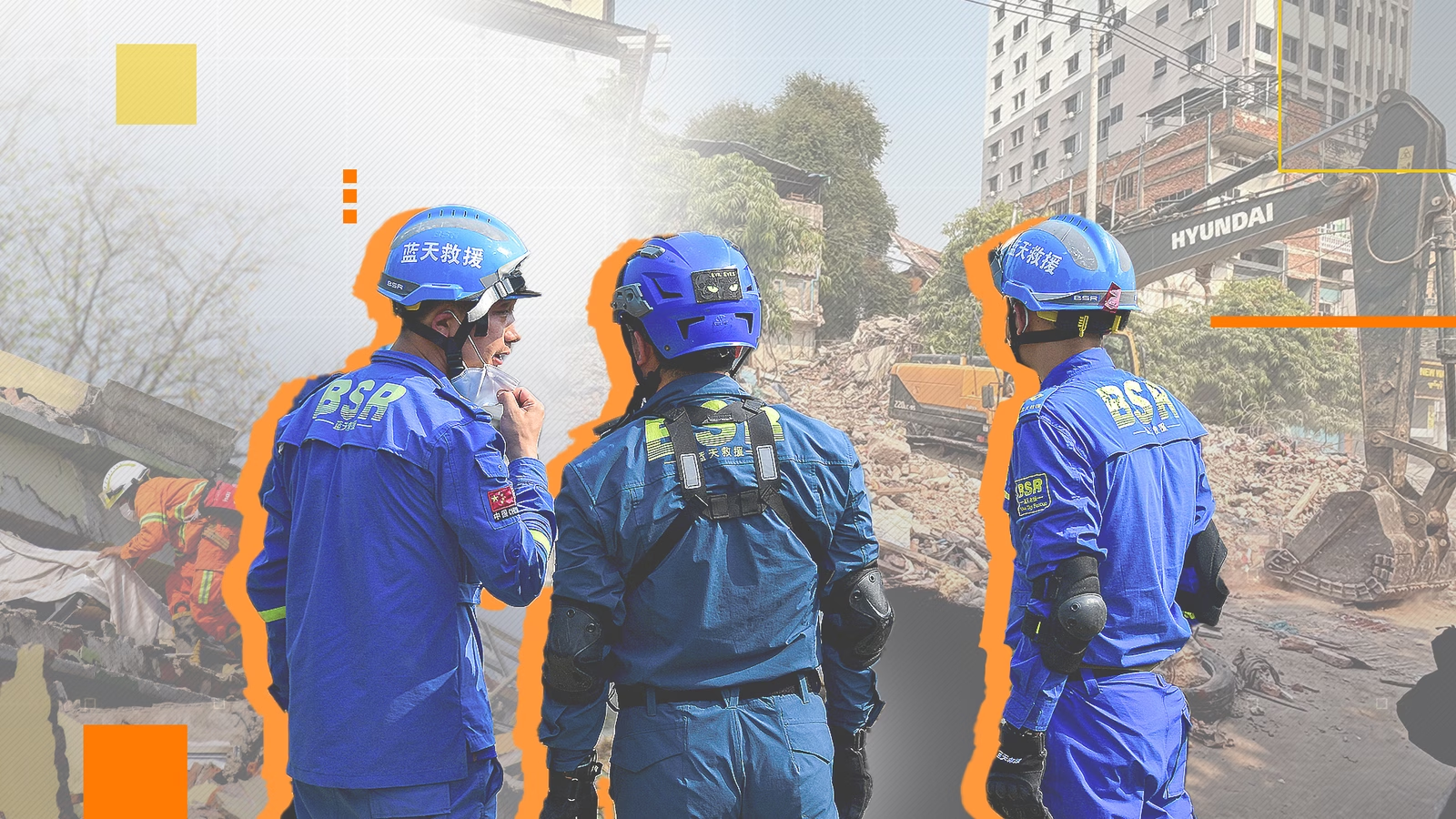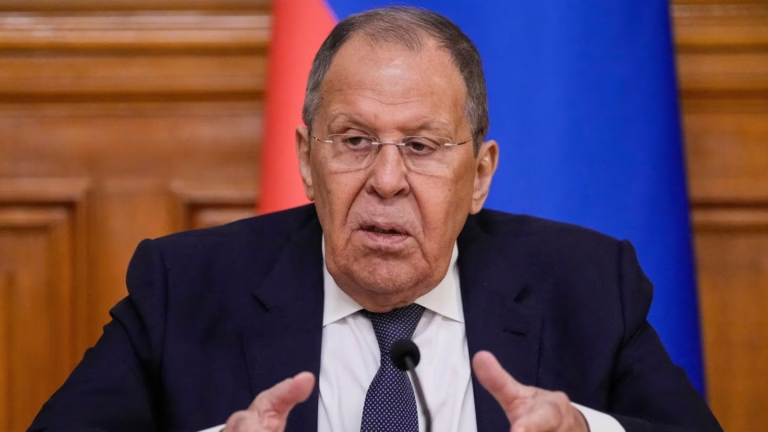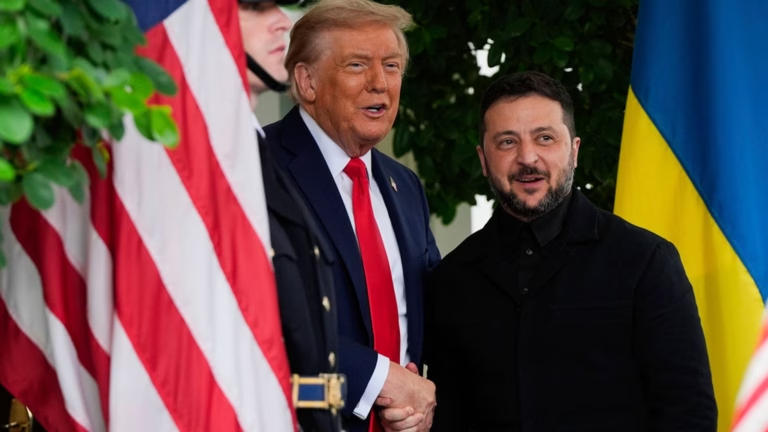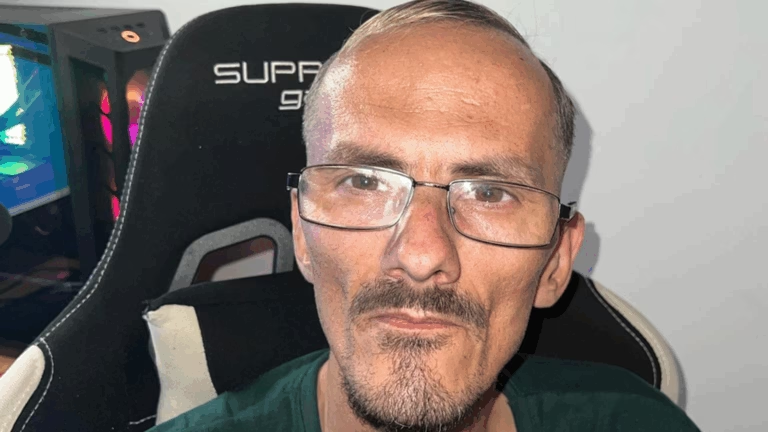Despite thousands of deaths and widespread destruction, Myanmar’s ruling military junta continues to restrict international journalists from entering the country.
The junta cites concerns over the safety of foreign media personnel in reporting the aftermath of the devastating earthquake that struck the Southeast Asian nation on Friday.
Additionally, the junta is still pursuing its campaign against rebel forces amidst the destruction.
As a result, open-source information from satellite imagery and social media has become crucial. Although the information is incomplete, it offers insight into the earthquake’s impact.

A building tilts precariously in Mandalay, Myanmar. Pic: Reuters
Mandalay, Myanmar’s second-largest city and only 20km from the epicenter, was severely affected. The city’s largest monastery, formerly boasting a clock tower, is now completely flattened.
Sky’s Data & Forensics Unit has assessed the damage using a combination of videos and satellite imagery.That is not a comprehensive picture of the destruction. For many areas, we do not have satellite imagery available—for example, the city of Sagaing. However, we have verified videos posted to social media that provide some insight into the situation there: buildings toppled, flattened pagodas, and even a collapsed bridge.

A collapsed bridge near the epicenter in Sagaing. Pic: Reuters
The country’s military rulers issued a rare call for help after the disaster. Their allies – Russia, India, and China – were among the first to respond.On Saturday, a Russian plane registered to the Ministry for Emergency Situations (EMERCOM) arrived in Mawlamyine, southern Myanmar, from Moscow.
EMERCOM said it had also flown 120 rescuers and supplies to Yangon, in the south of the country.
In Mandalay, Russian and Chinese emergency workers have collaborated in efforts to rescue civilians trapped under rubble, according to a post on the official Telegram channel for EMERCOM.
China said it sent more than 135 rescue personnel and pledged about $13.8m (£10.7m) in emergency aid. Chinese President Xi Jinping extended his condolences to the military junta leader, Min Aung Hlaing.
Other countries have also pledged financial support, including the US, the EU, and the UK.
However, there are concerns about the fair distribution of aid.
“Throughout history, the military uses denial of aid access as a counter-insurgency tactic,” said Morgan Michaels, research fellow at the International Institute for Strategic Studies (IISS). “So there is warranted concern that in this current crisis, the military could block aid to affected areas.”
Some 265 groups in Myanmar have signed a statement calling for aid to be directed to civil society, the National Unity Government, and ethnic resistance organizations, rather than the junta.
Khin Ohmar, spokesperson for the signatories to the statement, is concerned about aid not reaching areas like Sagaing, which was at the epicenter of the earthquake.
She told Sky News: “International rescue aid is not reaching people that need to be saved, and the junta keeps bombing areas, including Sagaing, where people were most severely impacted.”
With an ongoing civil war and poor infrastructure, Myanmar was already one of the most challenging places in the world for aid organizations to operate.
Some of the heaviest fighting has been concentrated in the areas hit hardest by the earthquake, including Sagaing and Mandalay.
Rebel groups in Myanmar that oppose the junta have called for a two-week pause in fighting to aid delivered and rescue efforts, saying they would only take defensive action.
However, these calls have not stopped the violence.
“There were about 11 or so airstrikes [on Sunday],” Mr. Michaels told Sky News. “One of these airstrikes happened in Nancho, which is in Shahn State.
“We already know that is the site of a major ongoing battle. So that looks more or less like a continuation of fighting with either side using the tools that they’ve been using all along.”
The Data and Forensics team is a multi-skilled unit dedicated to providing transparent journalism from Sky News. We gather, analyse, and visualize data to tell data-driven stories. We combine traditional reporting skills with advanced analysis of satellite images, social media, and other open-source information. Through multimedia storytelling, we aim to better explain the world while also showing how our journalism is done.


